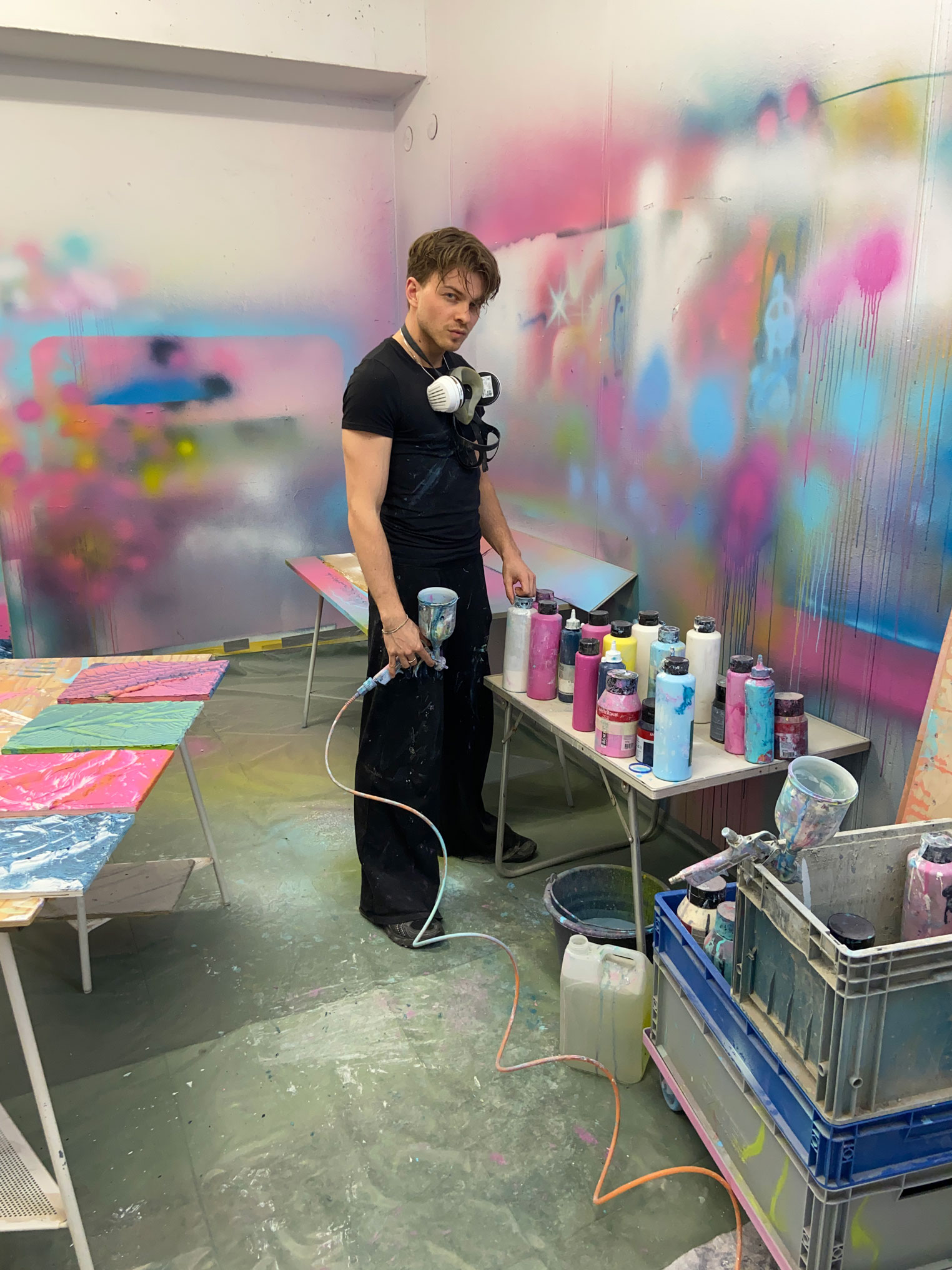An Interview
by Emily Hayes, Art Historian
eh: Johannes, your work revolves around capturing moments that might otherwise fade away. What drives you to preserve these fleeting imprints?
jp: I am fascinated by the idea of capturing time itself. By working with textile concrete, I aim to preserve the transient and make it permanent, challenging our perception of time and urging us to see it not as a linear flow, but as a complex, interconnected phenomenon.
eh: As you mentioned, you work with textile concrete and acrylic paint. How does this combination serve your artistic vision?
jp: The textile concrete acts as a canvas that captures the traces of movement and gesture. Once the concrete sets, I build upon it intuitively, applying up to 70 layers of acrylic paint. This process allows me to weave the physical and emotional narrative of the moment, where each layer of paint adds not just depth, but also a sense of time and presence that defines the work.
eh: The scale of your work is often quite large. How do you approach creating such expansive pieces?
jp: To handle large-scale pieces, I use an industrial car painting system. It allows me to apply multiple layers of paint efficiently and with precision, which is key to achieving the level of detail and depth I aim for in each work.
eh: How did you arrive at such a unique technique?
jp: My journey began with classical oil painting, followed by the exploration of concrete sculpture. Driven by the desire to merge these two distinct mediums, I spent several years engaged in a process of trial and error at various art academies. This experimental phase ultimately led me to discover textile concrete, a medium that enables me to intertwine the fluidity of painting with the enduring nature of sculpture.
eh: What do you hope viewers take away from experiencing your art?
jp: My work invites you to see the unseen and reflect on what truly endures. It’s about the marks we leave behind—those that shape our experience and impact the world around us, long after the moment has passed. It encourages reflection on how these imprints transcend time, creating a lasting dialogue between the past, present and future.
eh: Does failure or loss of control play a role in your process?
jp: Absolutely. Some of the most defining aspects of my practice emerged from moments I didn’t plan for. One night, after working late on a sculpture that wasn’t coming together, I accidentally spilled leftover concrete on the floor. I was too tired to clean it up. The next morning, I found it covered in footprints. People had unknowingly walked through the wet material, leaving behind a chaotic trail of impressions. Something about it struck me deeply. I began painting into those traces and realised that the material had quietly recorded everything. Concrete doesn't speak, but it listens. It remembers. That accidental moment taught me to stop forcing outcomes and instead start listening more carefully to what the work wants to become.
eh: And today, that moment continues to shape your practice.
jp: Yes. What started as an accident became a method.And that method became a language.
